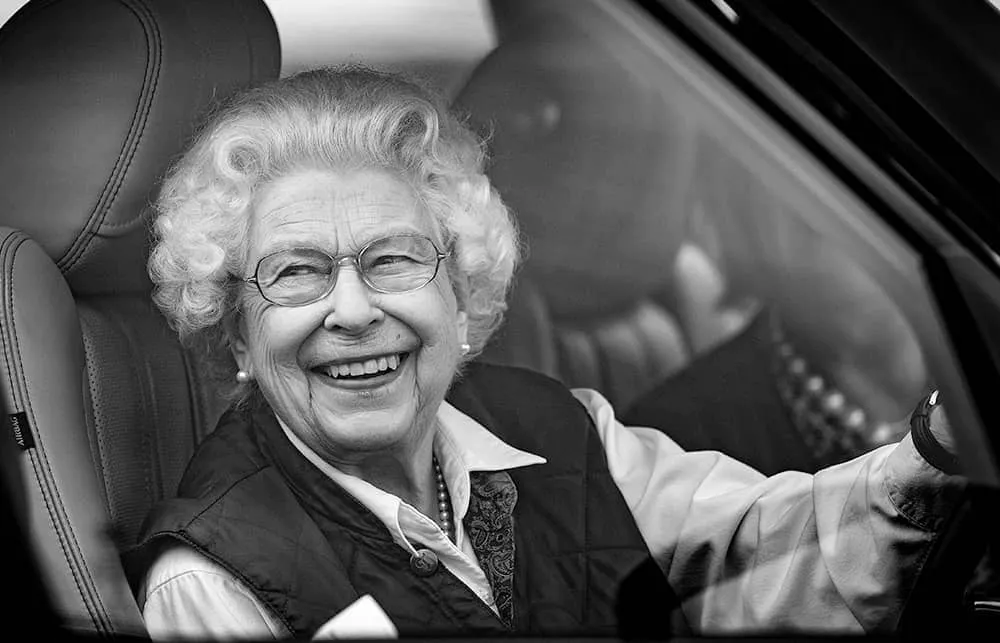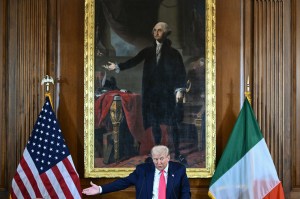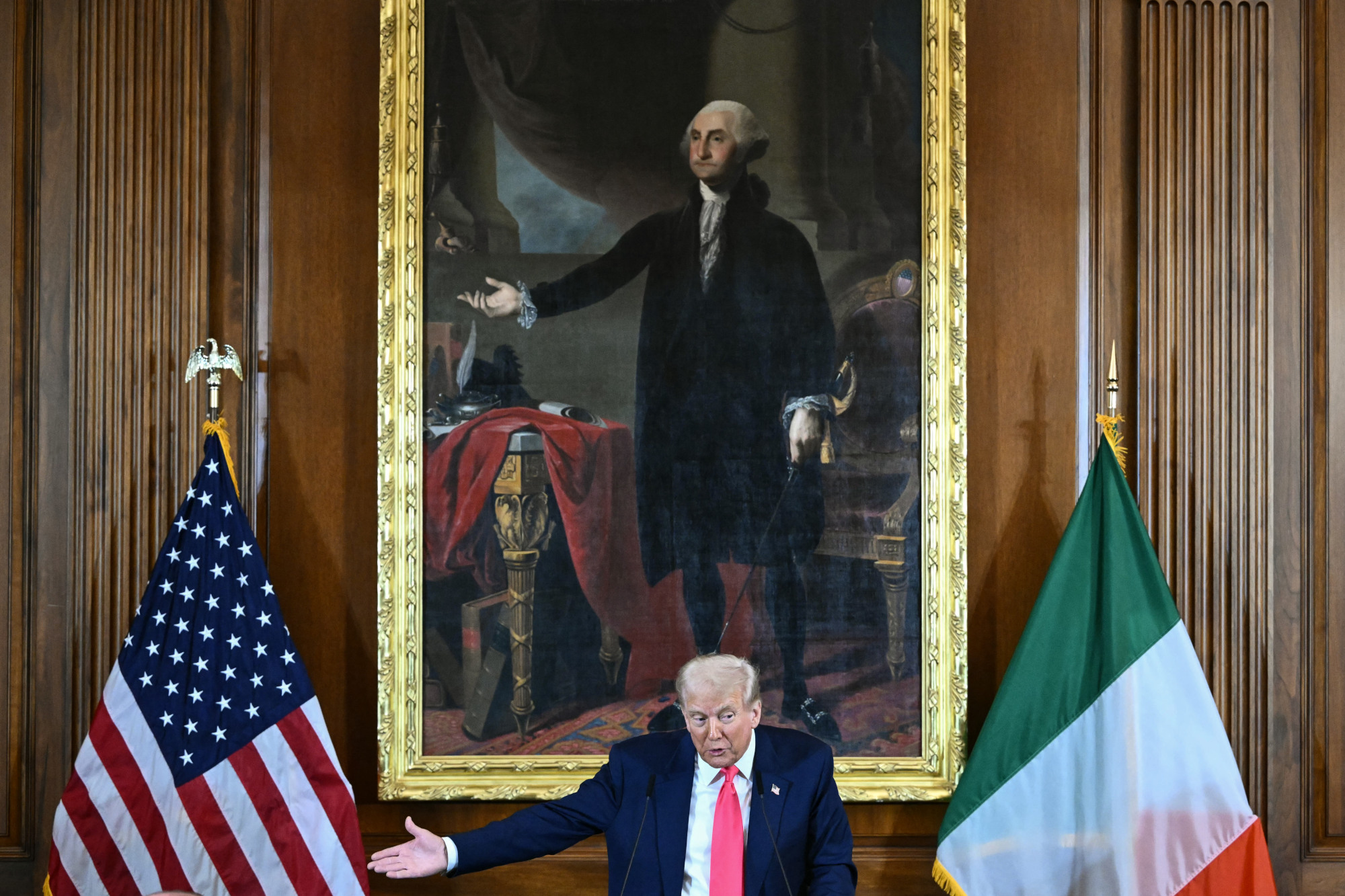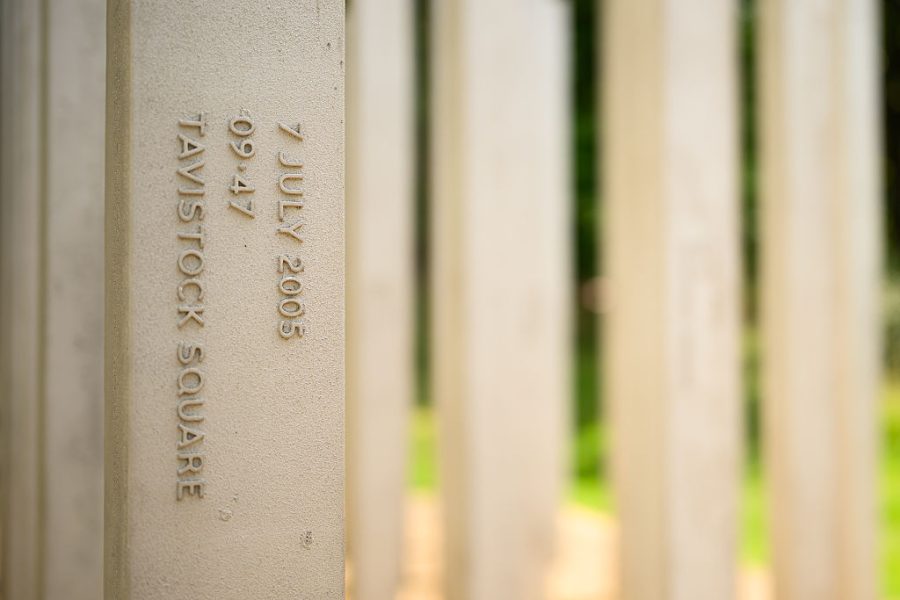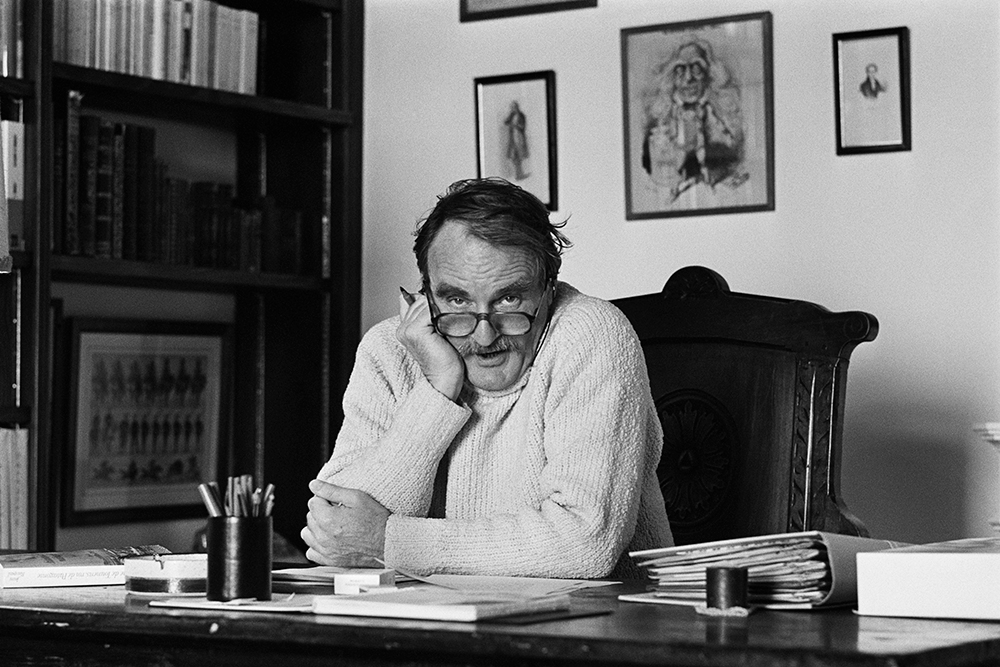Her task — did she ever quite realize it? — was to preside over a country in decline; and not merely to preside over it, but to be the nation’s anesthetic, creating the illusion that the nightmare was not happening. When she was born, at 17 Bruton Street, by Caesarean section, on April 21, 1926, Britain commanded the mightiest, richest empire in the history of the world. By the time she died, Britain had ceased even to be what Gore Vidal once called it, an American aircraft-carrier. It was simply a muddle of a place, which had lost most of its manufacturing industrial wealth, all its political influence in the world and any sense of national identity.
You could be forgiven for believing, since the sudden death in Balmoral, that everything had gone back to the norms of 1952: the BBC fervently monarchist, the ceremonies of accession and proclamation utterly traditional, the sentiments of enthusiasm, not only for the royal family, but for all the ancient forms which they represent, heartfelt.
While pouring forth the tributes to Her Majesty — many of them well-deserved — we allowed ourselves to forget the sad truth about us, and about Britain. It was the perfect example of how we have been using royal worship, royal gossip and royal mania as drug to blot out the truth about what has happened to Britain in her reign.
The United Kingdom that had existed since the Act of Union of 1707 had been cloven by the upsurge of Scottish nationalism — and the frail attempts at settlement of the Irish question. Few of the institutions which were in place at the time of her coronation in 1953 survived in anything like the robust form which obtained then. Her crowning, in a religious ceremony, held the world in thrall, not just because it was the first time the ceremony had been televised, but because the arcane and ancient rituals, the anointing, the vows, the clothing of this young woman in quasi-sacerdotal vestments, all meant something: to her personally, as a serious and committed Christian, but also to a nation most of whose citizens notionally at least claimed some sort of loose affiliation to the Church of England.
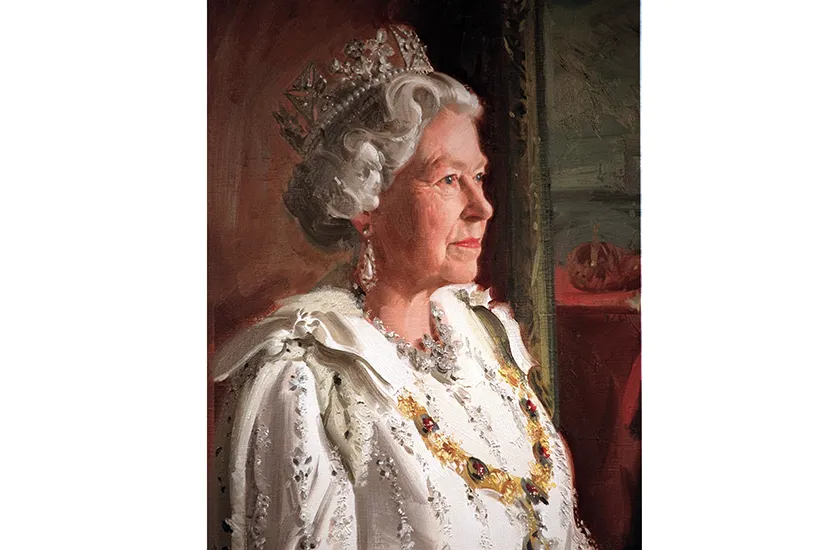
By the time of her death, practicing Anglicans were easily outnumbered by practicing Catholics and Muslims; and most practicing Anglicans were in fact Evangelicals on the American model, with no knowledge of, or fondness for, the Prayer Book and its centuries-old rhythms and phrases. The Church, by a series of vandalistic measures passed gleefully by its own home-baked Synod, had destroyed its time-hallowed liturgies, and as an institution it had torn itself apart by Lilliputian quarrels about subjects as arcane as gay marriage and female ordination. Parliament had become a largely discredited institution, its MPs revealed as time-serving and mildly corrupt — though not on the heroically continental model — through various expenses scandals, and the Upper House, purged of its hereditary element, had become an overcrowded assembly of gerontic political appointees, leavened by the statutory politically correct nominees with no aptitude for law-making and no knowledge of public affairs.
Yet whenever the Queen opened parliament, accompanied by her heralds and the statutory handful of Gilbert and Sullivan characters fantastically arrayed, we momentarily forgot the unimportance of parliament to our national life, just as, when the Queen doled out Maundy Money at our cathedrals, or took part in big public religious ceremonies, it was almost possible to forget the catastrophic and terminal decline of the National Church. As Larkin was to put it, in his tribute to her in the year of her Silver Jubilee, 1977:
In times when nothing stood But worsened, or grew strange, There was one constant good: She did not change.
She did not change, fundamentally, but, of course, she was constantly being modified. This process happened all but imperceptibly. Her voice became notably less old-fashioned — as any comparison with her earliest broadcasts and more recent speeches would show. “Orphan” became “often.” Her rather stiff manner became, after the death of the Princess of Wales in August 1997, notably gentler and more relaxed. This was partly because she settled, with dignity and humility, into becoming a little old lady, so that gestures such as those of Michelle Obama caressing the Queen’s back as they conversed — which would have horrified tweedy courtiers during the 1950s — were merely heart-warming. Her palpable fondness for and good relationship with her grandchildren — especially Prince William — also contributed to a public sense that the Queen, far from being a heartless or prim person, as her severe Queen-Maryish appearance sometimes suggested, was in fact a woman of emotional, as well as political, intelligence, superbly well-qualified for the strange role to which destiny had appointed her.
Had her uncle, who became King Edward VIII for those few dizzy months in 1936, been “mindful of ‘the Church’s teaching’” and married a woman who had not been married before and produced children, the two daughters of his brother the Duke of York — Lilibet and Margaret Rose — would have grown up as minor members of the royal family, able to lead relatively normal lives away from the public gaze. The minute that “Uncle David” had abdicated, on December 10, however, all eyes were focused on the little girl who was now the heir apparent. The weak health of her father, King George VI, and his addiction to cigarette-smoking on a scale which was heavy even by the standards of the time, meant it was likely she would succeed to the throne sooner rather than later.
By 1940, when she was fourteen, she was making her first wireless broadcast to the “children of the Empire.” Churchill’s secretary, Jock Colville, cringed as he listened, “embarrassed by the sloppy sentiment she was made to express.” After the war, when she was twenty-one, Princes Elizabeth broadcast to the Empire again, only by now it had become the British Commonwealth and Empire. Once again, that voice, high pitched and by the standards of today almost grotesquely upper-class, was heard crackling out of speakers all over the world. “I should like to make that dedication now. It is very simple. I declare before you all that my whole life, whether it be long or short, shall be devoted to your service and the service of our great imperial family to which we all belong.”
The figure who made these broadcasts was seen only occasionally by her public. The young princess, however, was being observed hour by hour by her governess, Marion Crawford, who was engaged by the Duchess of York to look after the “little princesses” in 1933, and remained with the royal household until 1949. Crawfie, as she was known, had a mind stuffed like an old shoebox full of snapshots and memories of these little girls. She could remember Lilibet rising in the middle of the night to tidy the shoes under her bed; Lilibet grooming her many horses-on-wheels.
During the war, the sirens promised an air raid, and Sir Hill Child assembled all the staff and the household in an air raid shelter. Everyone mustered, save the princesses. “They simply must come,” Sir Hill insisted. Crawfie was dispatched to the princesses’ quarters where they slept with Alah, their maid. She shouted “Alah!” through the door. “Yes, your Majesty,” Alah replied, for Crawfie had now come to resemble the Duchess of York in appearance as in voice. “This is not Your Majesty, Alah, it’s Crawfie. Lord Wigram and Sir Hill Child and everyone else is waiting in the shelter and you must come down. This is not a dress rehearsal. What are you doing?” Then came Lilibet’s voice: “We’re dressing, Crawfie. We must dress.”
Lilibet was always on duty. That is what Crawfie spotted. When she left the royal household, Crawfie, an incurable blabbermouth, wrote a book called The Little Princesses, which became an instant bestseller. It was an extraordinary thing to do, since it led to her being cast out forever by the people she most worshipped. “Doing a Crawfie” became synonymous among the royal family with those who spilled the beans. On one level, it is hard to see why they objected to Crawfie’s book, since it is a work of near-hagiography. Yet in its sugary, artless way, it is a definitive portrait, and anyone who has read this book need never read another book about the Queen or the royal family. It is all there.
During the annus horribilis, when one saw the Queen in a headscarf, walking about in the smoldering wreck of Windsor Castle after the fire, one saw not an old lady, but a little girl, drawn by E.H. Shepard, crossly kicking at fate with her gumboots. Crawfie had allegedly transgressed a rule that one must never repeat conversations with the royal family — a “rule” so far as one can tell invented by the then Duchess of York, and one which would have meant nothing to Greville or Queen Victoria, let alone Bishop Juxon or Dr. Johnson.
Much more fundamentally, however, Crawfie had committed the offense of telling the truth. Hers are canvases by a saccharine Murillo rather than a cynical Velasquez, but nevertheless, here they are, the royal personages, in all their immediately recognizable reality: Elizabeth Bowes-Lyon, that strange combination of the sweet and the ruthless, a Wodehousian rewrite of Lady Macbeth; King George, a chain-smoking emotional wreck, clinging to his elder daughter as to a boy scout’s alpenstock; the younger sister Margaret Rose, a madcap asking for trouble — which destiny would supply her in plenty; and little Lilibet, dutiful, serious though smiling, watchful, introverted, horsey, nobody’s fool and, from the very beginning, a little frightening.
When the cigarettes finally finished off poor King George, and Lilibet became Queen, at the age of only twenty-five, on February 6, 1952, that voice — which had promised to be dutiful throughout her life — was heard more often, and it would not be long before someone told the truth about it. The brave man was not a republican revolutionary, but a very genial Old Etonian historian and journalist called John Grigg — then Lord Altrincham. In the National and English Review in 1957, he complained not only about the “tweedy” composition of the Court but about the Queen herself. Her speeches were ” prim little sermons.” Her voice was “a pain in the neck.” And “Like her mother, she appears to be unable to string even a few sentences together without a written text. When she has lost the bloom of youth, the Queen’s reputation will depend, far more than it does now, upon her personality. It will not be enough for her to go through the motions.”
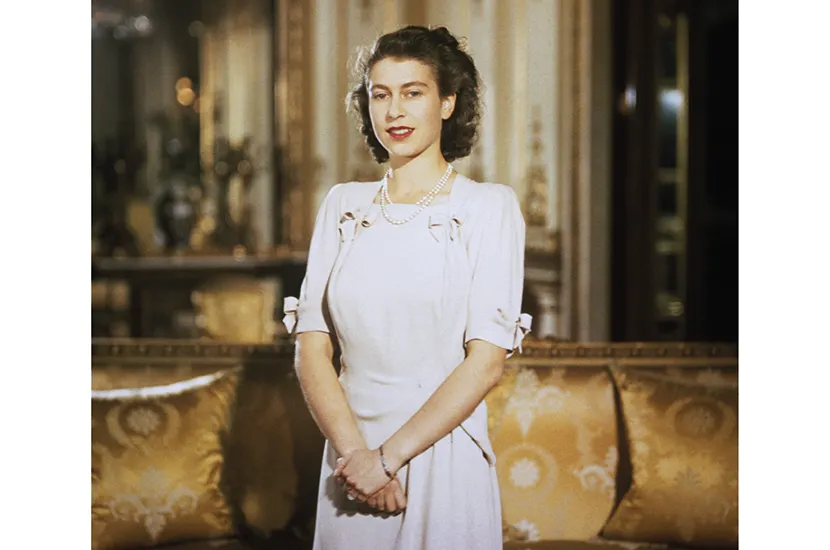
Some sixty-five years later, when she died — as easily the most revered figure in England, and perhaps in Britain as a whole — Grigg’s apparently sensible remarks of 1957 seem to be the almost exact opposite of the truth. Those who knew the Queen often spoke of personal qualities which were seldom on public display, such as warmth and humor. In a sense, they, too, missed the point — which was that her brilliance consisted in defying every syllable of Grigg’s advice. Even the voice, which was modified over the years, went on being a “pain in the neck.” The Christmas broadcasts went on being “prim little sermons” and she seldom, if ever, spoke off the cuff. What she did, year after year, month after faithful month, was to go through the motions.
There is almost no comparable figure on the world stage who has been prepared to do this. Even so gigantic a figure as Pope John Paul II could not help himself reinterpreting the role of the papacy, with his almost perpetual roadshow of appearances in sports stadia round the world. Yes, he was flying the flag for the Papacy and the Catholic religion, but — love him or loathe him — you were always aware of his overpowering personality. He did far more than going through the motions. The Queen did not do so. Her friends and the inner circle of race-goers, ladies-in-waiting and so on could all share moments when the Queen had burst into laughter after the blundering behavior of some visiting dignitary, or emphasize her natural and enthusiastic cheerfulness when touring the stables at Balmoral, or attending the races with chums such as Lord Porchester. But for the rest of us, the strength of the Queen’s personality was that it was kept hidden. She behaved as if she did not have one. She went through the motions.
This is one of the reasons why all the books about her, save Crawfie’s, are so boring. They are all about, in fact, not Lilibet herself, but about the people around her. They are about her marriage to Prince Philip, for example. Kitty Kelley, the sometimes fanciful American journalist, was prepared, as almost no British journalist in his lifetime was prepared, to speculate about Prince Philip’s extra-marital life. (Gyles Brandreth did a comparable job by repeating the same speculations in great detail, but finishing each chapter with the assertion that the more he considered the matter, the more certain he was that the Prince and this particular lady were just friends.)
Although comparably indelicate suggestions were made about the Queen and “Porchy” — Lord Porchester — they were never substantiated and were almost certainly untrue. Porchy and Prince Philip stand before us all as larger than life, but the Queen herself tactfully remains invisible, however often she has been filmed, photographed and written about.
Likewise, her children and grandchildren in various degrees all exist, in the press and in the public imagination, to be a series of cartoon characters, immediately recognizable.
After the divorces of Princess Anne and Prince Charles, many sympathetic commentators must have hoped that the Queen could look forward to an old age in which there were no more dreadful embarrassments from her offspring. Surely, after the Lady Di interview with Martin Bashir, no depths of embarrassment could be deeper? No one could have predicted the sheer horror of Prince Harry giving an interview to Oprah Winfrey and writing memoirs calculated to cause dismay. To name his second child Elizabeth would have been a charming olive branch to the family, after a period of tension. To name her Lilibet was somehow a vulgar intrusion into the Queen’s childhood self.
Nothing which Harry and Megan did or said, however, could match the story of Prince Andrew. Very much to her credit, the Queen held on for as long as possible, supporting him. While the Grenadier Guards and others were imploring her to sack him as an honorary colonel, she placed her loyalty and one must assume her love for her son, above public duty. Although we have all tried to imagine them, her feelings as the story of Andrew, Epstein and Maxwell unfurled are unimaginable.
Yet — apart from knowing of her enthusiasm for horses and jigsaw puzzles — none of us actually know anything about Queen Elizabeth II, beyond being aware of a series of dutiful journeys through the motions. Nor shall we know, even when an official biography is written, and even if her diaries are disclosed. Here lies one whose name was writ in water.
Royalist nerds could tell you how often she opened parliament, how often she visited New Zealand or Canada, which prime ministers were supposedly her favorites (Harold Wilson and John Major are the names usually trotted out, perhaps accurately, perhaps to make her sound paradoxical and more interesting than she actually was). Her strength was the vigor with which she pursued a career of not being interesting.
How far this was a calculated decision, all those years ago when she dedicated her life, long or short, to the service of the imperial family, we can not know, nor shall we ever know. It was, however, what made her so triumphantly successful a constitutional monarch. Republicans could attack the institution of the monarchy, but they could only ever do so on a theoretical level. They could not “descend to personalities” because, as far as the public was concerned, the monarch did not have a “personality” in the sense that, say, her son Prince Charles had. His celebrated letters to ministers of the crown, setting out his views of every subject from unpasteurized cheese and genetically modified crops to the European Union or the People’s Republic of China, would have been simply unthinkable coming from the pen of his mother. She did not go in for “views” — one suspects this was carried into private life, as well as into the public realm.
This did not mean she was vacuous. A good example occurred during the miners’ strike of 1984-85. Prince Philip and the Queen visited the offices of the Times of London when the strike was in progress, and the Duke of Edinburgh was heard to denounce Arthur Scargill as “a shit.” The Queen, meanwhile, was talking to Paul Routledge, the journalist covering the strike for the paper. She described going down a mine in Scotland which had subsequently closed down. Then, referring to the strike, she said: “It’s all about one man, isn’t it?” Routledge remonstrated with her. He said that it took more than one man to have brought out 100,000 men on strike for more than a year. Eight years later, however, in a book on the subject, he wrote: “I now feel that I owe the Queen an apology. By that stage, at any rate, the strike was about one man. Scargill may not have started the strike, but one word, one signal from him could have called it off before the struggle plumbed the depths of misery, violence and failure to which it sank.”
There were probably very many such instances, in the course of a long reign, when the Queen actually had her finger on the pulse of what was going on rather more sensitively than the journalists or the politicians. Her unease, for example, about Conservative support — under Thatcher’s premiership — for the government of South Africa and her siding with the Commonwealth against Thatcher was an instance of her being judiciously political and the reverse of anodyne.
Likewise, although David Cameron — the prime minister at the time — spoke out of turn when he described her purring down the telephone at the news of the defeat of the Scottish referendum, she made it abundantly and publicly clear that, having been crowned Queen of a United Kingdom, she wished it to remain that way. This, however, did not stop her being remarkably eloquent, through silence and bowing her head in a cemetery, during her state visit to Ireland in 2011. She managed that visit quite flawlessly and it made an enormous impression, not only in Ireland but abroad. The speech which she began, at a state banquet, with a few words of Gaelic, which called for “forbearance and conciliation” was so unlike the preening or aggressive words the Irish people had been used to hearing from English politicians.
She was not given to any display. The wartime spirit which nurtured her during the crucial adolescent years in Windsor defined her stoical character and it was somehow appropriate that when Prince Philip went to his Eternal Reward, it happened during lockdown — the closest thing you could imagine to the wartime of ration books, the liturgical equivalent of powdered eggs. Everyone was moved by the sight of her sitting alone in the stalls of St George’s Chapel as the choir sang the Russian Kontakion for the Departed to her husband’s coffin. But it was also fitting.
Chiefly she spoke, on this occasion and throughout her reign, by her silences. Many of those who spoke to her — either intimates or those meeting her for a few moments — felt a sense of deep personal goodness. Such goodness can be a little frightening, for she embodied standards the rest of us can not often attain.
I once asked her sister, Princess Margaret, whether she was one of those many people who had dreams about the Queen. She was. She said it was always the same dream. That she had done something wrong of which the Queen furiously disapproved. One might suppose this was simply a case of the princess’s dream-life reflecting reality, but she said: “The Queen is not in fact a censorious person and she has never criticized me personally, in waking life. Only in my dreams. When I wake up after such a dream I feel utterly wretched, as if I have been shut out of the love of God. I wake much later than she does, but when I have had such a dream, I always have to ring her up, even if it is mid-morning and she is at work. I simply pick up the receiver, ring and she says ‘Hello.’ I say ‘Hello’ and ring off. All is well. I hear the voice. I know that I still have her love.”
This article was originally published in The Spectator’s UK magazine. Subscribe to the World edition here.



